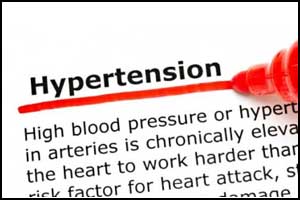- Home
- Editorial
- News
- Practice Guidelines
- Anesthesiology Guidelines
- Cancer Guidelines
- Cardiac Sciences Guidelines
- Critical Care Guidelines
- Dentistry Guidelines
- Dermatology Guidelines
- Diabetes and Endo Guidelines
- Diagnostics Guidelines
- ENT Guidelines
- Featured Practice Guidelines
- Gastroenterology Guidelines
- Geriatrics Guidelines
- Medicine Guidelines
- Nephrology Guidelines
- Neurosciences Guidelines
- Obs and Gynae Guidelines
- Ophthalmology Guidelines
- Orthopaedics Guidelines
- Paediatrics Guidelines
- Psychiatry Guidelines
- Pulmonology Guidelines
- Radiology Guidelines
- Surgery Guidelines
- Urology Guidelines
Majority of Indians have undiagnosed,uncontrolled high BP, finds nationwide study

Majority of Indians have undiagnosed, uncontrolled high blood pressure or high BP, finds a nationwide cross-sectional study.
The incidence of high blood pressure (high BP) or hypertension in India is high, but the percentage of adults with high BP who are conscious of the diagnosis and are handled, and controlled is small, revealed a nationwide cross-sectional study published in the journal PLOS Medicine.
This study was undertaken by the research team consisting of investigators from Heidelberg Institute of Global Health, Department of Global Health and Population, Harvard T.H. and Health Foundation of India which study aimed to determine firstly, the proportion of adults with high BP who have been screened, are aware of their diagnosis, take antihypertensive treatment, and have achieved control and secondly, the variation of these care indicators among states and sociodemographic groups.
High BP or Hypertension is a major risk factor for cardiovascular disease, which is the leading cause of death in India. The cascade of care for some chronic diseases—i.e., the proportion with a relevant condition who have ever been screened, are aware of their diagnosis, are on medication, and have achieved control—is a useful concept to inform intervention design and assess health system performance. To date, there has been little large-scale population-based evidence from India on the steps from screening for to successful control of high BP at which people are lost from care.
Using data from a nationally representative survey of 731,864 individuals aged 15 to 49 years sampled from all states and union territories in India, the researchers constructed the hypertension care cascade by computing the percentage of participants with high BP who reported ever having their blood pressure measured before the survey (“screened”), had previously been diagnosed with hypertension (“aware”), reported currently taking blood-pressure-lowering medication (“treated”), and were treated and had a normal blood pressure (“controlled”).
Key findings
- Among those with high BP, 76.1% had been screened, 44.7% were aware of their diagnosis, 13.3% were treated, and 7.9% had achieved control.
- In addition to a large degree of variation in the hypertension care cascade between states in India, we found that being male, living in a rural location, living in a less wealthy household, and not being married were associated with greater losses at each step of the care cascade.
The authors conclude: Whereas some states perform substantially better than others and thus may hold important policy lessons, across India most individuals aged 15 to 49 years with high BP do not successfully transition through the steps of the care cascade. Interventions to improve hypertension care may want to target men, individuals in rural areas, and those with low household wealth because these population groups were particularly likely to be lost at each step of the hypertension care cascade.
Lastly, the authors stated that An important limitation of this study is that the results cannot be generalized to adults aged 50 years and older, which is the population segment with the highest hypertension prevalence.
Reference
Prenissl J, Manne-Goehler J, Jaacks LM, Prabhakaran D, Awasthi A, Bischops AC, et al. (2019) Hypertension screening, awareness, treatment, and control in India: A nationally representative cross-sectional study among individuals aged 15 to 49 years. PLoS Med 16(5): e1002801. https://doi.org/10.1371/journal.pmed.1002801

Disclaimer: This site is primarily intended for healthcare professionals. Any content/information on this website does not replace the advice of medical and/or health professionals and should not be construed as medical/diagnostic advice/endorsement or prescription. Use of this site is subject to our terms of use, privacy policy, advertisement policy. © 2020 Minerva Medical Treatment Pvt Ltd